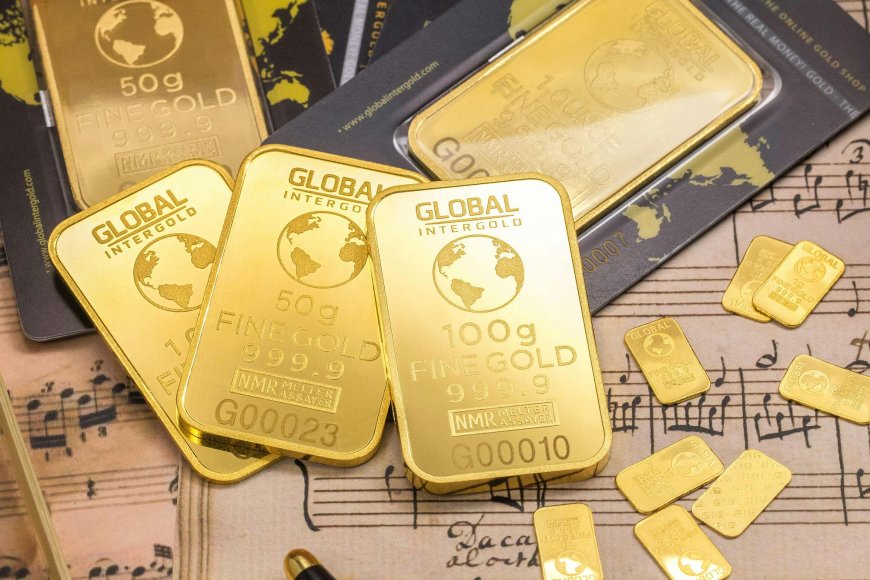UBS Raises Gold Forecast as Prices Hover Near Record High
UBS hikes gold outlook again as global uncertainty and strong demand push the precious metal near historic highs.

The glitter of gold has rarely shone brighter. Prices of the precious metal are hovering just below record levels, drawing investors across the globe into a renewed frenzy. This week, Swiss banking giant UBS raised its gold forecast once again, pointing to a combination of stubborn inflation, resilient demand from central banks, and geopolitical uncertainty that refuses to fade.
For ordinary savers and institutional investors alike, the move underscores a growing reality: gold has reasserted its role as a safe-haven asset in a world fraught with risks.
Why UBS Lifted Its Gold Price Outlook
UBS, one of the world’s largest wealth managers, now expects gold to continue climbing through 2025, citing a mix of financial and geopolitical drivers. The bank’s analysts noted three key reasons for the upward revision:
- Persistent inflation pressures that keep investors wary of fiat currency erosion.
- Aggressive central bank purchases, particularly in emerging markets seeking diversification away from the U.S. dollar.
- Heightened geopolitical tensions, from global conflicts to trade disputes, that add to the appeal of a stable store of value.
In its latest update, UBS emphasized that the precious metal is no longer just a hedge—it is a strategic allocation for investors looking for stability in turbulent times.
Inflation, Interest Rates, and the Dollar’s Shadow
Gold’s fortunes have always been closely tied to macroeconomic shifts, and today is no different. Inflation across the U.S., Europe, and the U.K. remains above central banks’ comfort zones, even as policymakers talk of easing monetary policy.
While interest rates are expected to gradually decline, they remain high enough to restrain risk appetite in equities. For investors, this creates a delicate balancing act: where to park wealth when bonds deliver modest returns and stock markets wobble.
The U.S. dollar, meanwhile, has shown strength but remains volatile. For countries looking to shield themselves from dollar dependency, gold offers a tried-and-tested alternative. UBS analysts argue this diversification trend is likely to intensify.
Central Banks: The Silent Power Behind Gold Demand
Perhaps the most underappreciated factor in gold’s surge has been the relentless appetite of central banks. In 2023 and 2024, monetary authorities from China to Turkey added record amounts of gold to their reserves.
UBS notes that this wave of official buying has underpinned gold prices even when retail demand fluctuates. For these nations, gold is more than an investment—it is a geopolitical hedge. As global tensions deepen, holding gold becomes a way to reduce exposure to Western financial systems.
This structural shift means the floor for gold prices is higher than in previous cycles. Even if speculative flows ebb, central bank demand is unlikely to vanish.

Investors Turn Back to Tradition
Beyond institutions, individual investors are rediscovering gold’s allure. Exchange-traded funds (ETFs) backed by physical bullion have seen renewed inflows, while jewelers report steady demand despite high prices.
For many, the emotional pull of gold is as important as the financial logic. Unlike digital assets or complex financial products, gold is tangible, universally recognized, and steeped in cultural significance.
One London-based retiree summed up the sentiment: “I’ve lived through currency swings and market crashes. Gold is the one thing that makes me sleep better at night.”
The Story of Trust: A Generational Connection
Gold’s resilience isn’t just economic—it’s deeply human. For centuries, families have passed down coins, jewelry, and bars as symbols of security. That sense of continuity resonates powerfully in uncertain times.
Take the story of Rajesh, a Canadian entrepreneur whose parents emigrated from India. He recalls his mother giving him a small gold chain when he moved abroad: “It wasn’t just about value. It was a reminder that in the toughest moments, this would never let me down.”
This emotional anchor explains why, even in a world dominated by tech stocks and cryptocurrencies, gold retains a unique place in the financial imagination. UBS’s forecast upgrade taps into that deep vein of trust.
What Could Push Prices Higher Still?
UBS points out several catalysts that could send gold beyond its current near-record levels:
- Sharper-than-expected interest rate cuts in the U.S. or Europe.
- Escalation of geopolitical conflicts, driving safe-haven buying.
- Continued weakness in global equities, making gold more attractive.
- Accelerated central bank diversification, particularly in Asia.
These dynamics create what analysts call a “perfect storm” for sustained strength in gold.
Risks on the Horizon
Still, not every forecast is golden. UBS cautions that a sudden recovery in the global economy, or stronger-than-expected performance in risk assets, could temper gold’s rise. Likewise, if inflation eases faster than expected, investor urgency to hedge may decline.
Yet even these scenarios are unlikely to trigger a major correction, analysts argue. With structural demand from central banks underpinning the market, gold appears less vulnerable to steep downturns than in previous decades.
Conclusion: Why Gold Is Back in the Spotlight
Gold’s latest rally is more than just a speculative rush. It reflects a deeper shift in how individuals, institutions, and governments see risk. In a world marked by volatility—whether in markets, politics, or climate—gold’s simplicity has become its greatest strength.
UBS’s decision to raise its forecast again captures this reality: gold is not a relic of the past, but a crucial asset of the present. And as long as uncertainty lingers, its gleam is unlikely to fade.
FAQs
1. Why did UBS raise its gold forecast?
Because of persistent inflation, strong central bank buying, and ongoing geopolitical risks.
2. How high can gold prices go in 2025?
UBS sees potential for prices to break fresh records if interest rates fall and demand stays strong.
3. Is gold still a safe investment today?
Yes. It remains a trusted hedge against inflation, currency volatility, and market instability.
4. Who is buying the most gold right now?
Central banks, especially in emerging markets, are the largest buyers in recent years.
5. What risks could lower gold prices?
A faster global recovery, easing inflation, or surging equities could cool demand.
আপনার প্রতিক্রিয়া কী?
 পছন্দ
0
পছন্দ
0
 অপছন্দ
0
অপছন্দ
0
 ভালোবাসা
0
ভালোবাসা
0
 মজার
0
মজার
0
 রাগান্বিত
0
রাগান্বিত
0
 দুঃখজনক
0
দুঃখজনক
0
 বাহ
0
বাহ
0




























































